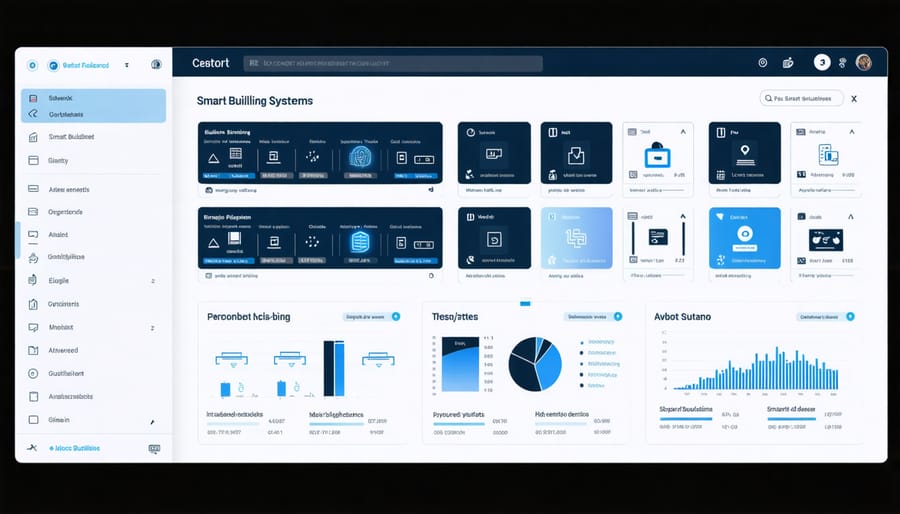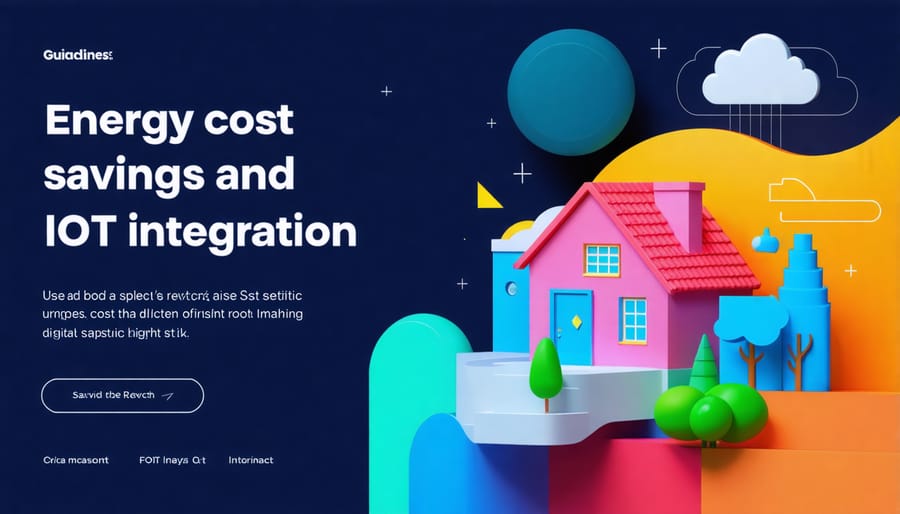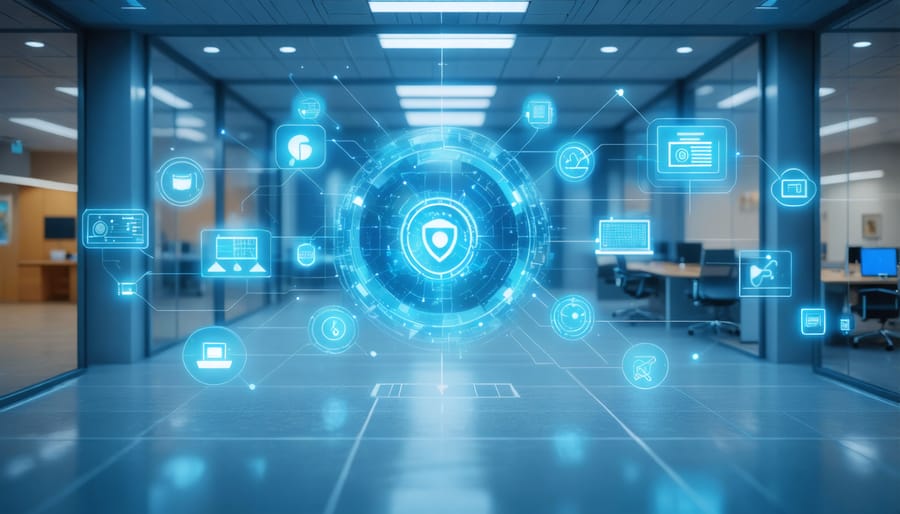Transform your building’s fragmented smart systems into a unified powerhouse with an IoT integration platform – the cornerstone of modern PropTech innovations. Operating multiple disconnected smart devices and building management systems not only creates operational headaches but also leaves significant cost-saving opportunities untapped. Today’s IoT integration platforms seamlessly connect your building’s disparate systems – from HVAC and lighting to security and occupancy sensors – into a single, intelligent ecosystem that delivers real-time insights and automated responses.
For property owners and managers, this convergence means unprecedented control over building operations, reduced energy consumption, and enhanced tenant satisfaction. Whether you’re managing a single commercial property or overseeing a diverse real estate portfolio, these platforms transform raw data into actionable intelligence, enabling predictive maintenance, optimized resource allocation, and data-driven decision-making. The result? Lower operational costs, increased property value, and a competitive edge in an increasingly tech-driven real estate market.
How IoT Integration Platforms Transform Smart Buildings
Centralized Building Control
IoT integration platforms revolutionize building management by creating a unified control center for all smart systems within a property. Think of it as a digital command center where property managers can oversee and control everything from HVAC and lighting to security and elevator systems through a single dashboard.
This centralized approach eliminates the need to juggle multiple software applications or control panels. Instead, building managers can monitor energy consumption, adjust temperature settings, manage access control, and respond to maintenance alerts all from one intuitive interface. For example, if an HVAC issue is detected, the system can automatically adjust nearby units to maintain comfort while alerting maintenance staff.
The real power lies in the platform’s ability to create intelligent automation sequences. When the last employee leaves the office, the system can automatically adjust thermostats, turn off lights, arm security systems, and lock doors. This not only enhances operational efficiency but also significantly reduces energy costs and improves security protocols.
For property owners, this centralization translates into streamlined operations, reduced management overhead, and enhanced asset value through improved building performance and tenant satisfaction.

Real-time Monitoring and Analytics
Real-time monitoring and analytics form the backbone of any effective IoT integration platform, providing property managers with invaluable insights into their building’s performance. These systems continuously collect data from various sensors and devices throughout the property, transforming raw information into actionable intelligence.
The platform’s dashboard presents real-time metrics on energy consumption, occupancy rates, equipment performance, and environmental conditions. Property managers can track key performance indicators (KPIs) at a glance, enabling quick decision-making and proactive maintenance. For instance, unusual energy consumption patterns might indicate equipment inefficiencies, while occupancy data can help optimize HVAC scheduling.
Advanced analytics capabilities employ machine learning algorithms to identify trends and predict potential issues before they become problems. The system can forecast maintenance needs, suggest energy-saving opportunities, and even recommend optimal times for equipment replacement based on usage patterns and performance data.
Customizable alerts and notifications keep property managers informed of critical events or threshold breaches, allowing for immediate response to situations like water leaks or security breaches. This predictive approach to property management not only reduces operational costs but also enhances tenant satisfaction through improved service delivery and maintenance response times.
Financial Benefits for Property Owners

Energy Cost Reduction
Smart building management through IoT integration platforms has emerged as one of the most impactful real estate technology trends, particularly in reducing energy costs. Property owners implementing these systems typically see a 20-30% reduction in their energy bills through automated, intelligent management of building systems.
For example, smart HVAC systems can automatically adjust temperature settings based on occupancy patterns and weather conditions. A typical office building using IoT-enabled climate control can save approximately $0.50-$1.00 per square foot annually in heating and cooling costs. Motion sensors integrated with lighting systems can reduce electricity usage by up to 50% in less-frequented areas.
Smart meters and real-time energy monitoring allow property managers to identify energy waste patterns and optimize consumption. One notable case study showed a 25,000-square-foot commercial building saving $45,000 annually after implementing IoT-based energy management.
Water management systems with smart leak detection can prevent costly water damage while reducing consumption by 15-20%. Additionally, automated window shading systems can work in harmony with HVAC systems to optimize natural light and temperature control, further reducing energy needs by up to 10%.
These savings not only contribute to lower operational costs but also increase property value and attract environmentally conscious tenants, making IoT integration a smart investment for forward-thinking property owners.
Maintenance Cost Optimization
Predictive maintenance through IoT integration platforms is revolutionizing how property owners manage operational costs. By continuously monitoring building systems and equipment, these platforms can detect potential issues before they become costly problems, significantly reducing unexpected repair expenses and system downtime.
Real-world data shows that predictive maintenance can cut maintenance costs by 20-40% compared to traditional reactive maintenance approaches. The platform’s AI-powered algorithms analyze patterns in equipment performance, energy consumption, and wear-and-tear indicators to forecast maintenance needs with remarkable accuracy.
For property owners, this translates into tangible benefits:
– Extended equipment lifespan through timely interventions
– Reduced emergency repair calls and overtime labor costs
– Optimized maintenance scheduling during off-peak hours
– Lower inventory costs for spare parts
– Minimized system downtime and tenant disruption
The platform’s dashboard provides real-time cost tracking and maintenance ROI metrics, helping property managers make data-driven decisions about equipment replacement versus repair. This predictive approach also helps in budgeting and financial planning, as maintenance expenses become more predictable and manageable.
Insurance providers often offer reduced premiums for properties utilizing IoT-based predictive maintenance systems, recognizing the lower risk profile these technologies provide. This additional cost benefit makes the investment in IoT integration platforms even more attractive for property owners focused on long-term asset management and value preservation.
Insurance and Risk Management Advantages
Enhanced Security Features
IoT integration platforms have revolutionized building security through advanced features that significantly reduce risks and insurance costs. These platforms incorporate cybersecurity measures for smart buildings that protect against both physical and digital threats, often resulting in insurance premium reductions of 15-30%.
Key security features include real-time surveillance with AI-powered anomaly detection, multi-factor authentication for access control, and encrypted data transmission protocols. Insurance providers particularly value the automated incident reporting and response capabilities, which can minimize damage and reduce claim frequencies.
Property owners benefit from centralized security management, where all systems – from surveillance cameras to door locks – can be monitored and controlled through a single dashboard. This integration enables instant threat detection and response, often preventing incidents before they occur.
The platform’s ability to maintain detailed security logs and provide compliance reporting has become increasingly valuable for insurance underwriting. Many insurers now offer preferred rates to properties utilizing these advanced security features, recognizing their effectiveness in risk mitigation and property protection.
Risk Mitigation Systems
IoT integration platforms significantly enhance property risk management through automated monitoring systems. These platforms continuously track crucial environmental factors like temperature, humidity, and air quality, while also monitoring for potential hazards such as water leaks, fire risks, and unauthorized access.
Smart sensors deployed throughout the property create a comprehensive safety net, instantly alerting property managers to emerging issues before they escalate into costly problems. For instance, water leak detection sensors can automatically shut off water supply when a leak is detected, preventing extensive water damage and subsequent insurance claims.
The system’s predictive maintenance capabilities identify potential equipment failures before they occur, reducing the risk of sudden breakdowns and associated property damage. This proactive approach not only protects the property but often leads to reduced insurance premiums and lower maintenance costs.
Additionally, these platforms maintain detailed digital records of all incidents and responses, providing valuable documentation for insurance claims and risk assessment purposes. This data-driven approach helps property owners demonstrate their commitment to risk management, potentially qualifying them for better insurance rates and coverage terms.
Implementation Considerations

Platform Selection Criteria
When selecting an IoT integration platform for your property, several crucial factors deserve careful consideration. First, assess the platform’s scalability to ensure it can grow alongside your property portfolio and accommodate future technological additions. The platform should support various protocols and devices, making it compatible with existing building systems and smart investment technologies.
Security features are paramount, as connected building systems can be vulnerable to cyber threats. Look for platforms with robust encryption, regular security updates, and clear data privacy policies. The user interface should be intuitive enough for property managers while offering advanced features for technical staff.
Cost considerations should include not just initial implementation expenses, but also ongoing maintenance, upgrades, and potential integration costs. Choose a platform with transparent pricing and predictable long-term costs. Support and reliability are equally important – ensure the provider offers comprehensive technical support and maintains high system uptime.
Integration capabilities with property management software and building automation systems should be seamless. The platform should offer real-time monitoring, actionable analytics, and customizable reporting features that help optimize property operations and reduce operational costs. Finally, consider the vendor’s track record in the real estate sector and their commitment to platform evolution and innovation.
Integration Timeline and Costs
The implementation timeline for an IoT integration platform typically spans 3-6 months, depending on your property’s size and complexity. Initial assessment and planning usually take 2-4 weeks, during which system requirements are defined and existing infrastructure is evaluated. The actual installation and basic setup phase generally requires 4-8 weeks, followed by a testing period of 2-4 weeks.
Cost-wise, property owners should budget between $10,000 to $50,000 for a mid-sized commercial building implementation. This includes hardware costs ($5,000-$20,000), software licensing ($2,000-$10,000 annually), and professional installation ($3,000-$15,000). Ongoing maintenance and support typically run 15-20% of the initial investment annually.
Several factors can impact both timeline and costs:
– Existing infrastructure compatibility
– Number of connected devices and sensors
– Integration complexity with current building systems
– Staff training requirements
– Custom feature development needs
To optimize costs, consider a phased implementation approach, starting with critical systems like HVAC and security before expanding to additional features. Many vendors offer flexible payment models, including monthly subscriptions that can help manage upfront expenses. Remember to factor in potential energy savings and operational efficiencies when calculating ROI, as most properties see a return within 18-24 months of full implementation.
IoT integration platforms have fundamentally transformed the landscape of smart building management, delivering substantial benefits that extend far beyond basic automation. Property owners and managers who have embraced these solutions are experiencing significant cost savings through optimized energy consumption, reduced maintenance expenses, and improved operational efficiency.
The future outlook for IoT integration platforms in smart buildings is exceptionally promising. As technology continues to evolve, we can expect to see even more sophisticated features, including advanced predictive maintenance capabilities, enhanced security protocols, and deeper integration with emerging technologies like artificial intelligence and machine learning.
These platforms are becoming increasingly essential for modern property management, offering a competitive edge in the real estate market. The ability to provide tenants with superior comfort while maintaining optimal building performance has become a significant differentiator for property investors. Furthermore, the data-driven insights generated by these systems are proving invaluable for making informed property investment decisions and reducing insurance risks.
Looking ahead, we can anticipate more standardized protocols, improved interoperability between different IoT devices, and more user-friendly interfaces. This evolution will make IoT integration platforms more accessible to property owners of all sizes, from single-family homes to large commercial complexes. The return on investment will likely continue to improve as technology costs decrease and efficiency gains increase, making these platforms an increasingly attractive proposition for property investors and managers focused on long-term value creation.